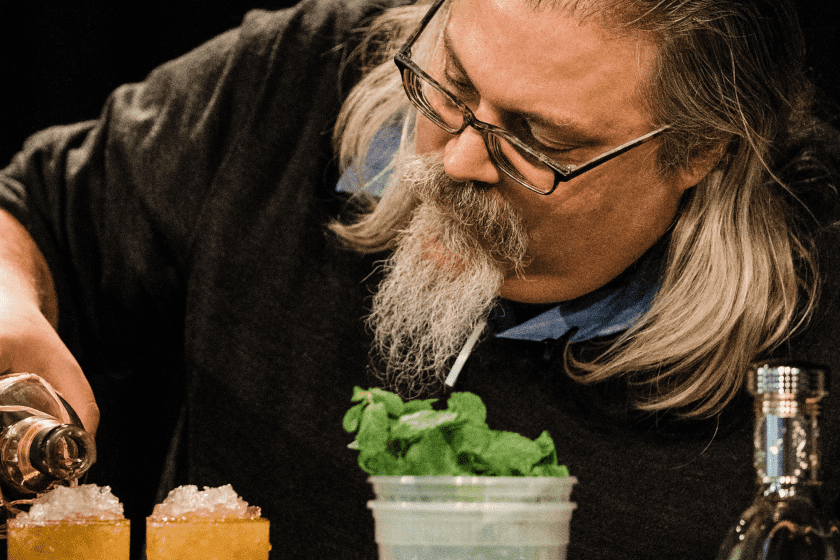In the early 20th century, David Wondrich writes in the “Oxford Companion to Spirits & Cocktails,” the dry martini “was an icon of modernity itself; the liquid version of jazz, motion pictures and the comic strip. It was simple, direct and strong. There was nothing hiding in it, but at the same time it had nuance and intelligence and verve. It was, as H.L. Mencken pronounced it, ‘the only American invention as perfect as a sonnet.’”
The entry, one of 1,150 by 150 authors in a book of more than 800 pages, is typical in its flair and appreciation of alcoholic beverages as cultural forms. But the Oxford Companion, which took nine years to produce, considers spirits and cocktails in all of their aspects, including their chemistry, production, history, marketing and evolution. It’s a remarkable volume that will fascinate the brand manager every bit as much as the bartender.
The story of spirits since the late 19th century is largely that of brands, 123 of which have entries in the book. A few have histories of almost uninterrupted success, such as Johnnie Walker, which dates to 1820 and whose “famous striding Johnnie Walker figure rewrote the semiotics of whisky advertising at a stroke” upon its creation in 1908, we learn. Similarly, Bacardi transformed “the perception of rum from a rough-edged, generally unwholesome drink of sailors to a lighter, more refined drink of sophisticated urban sippers” and still controls two-thirds of the world’s rum market.
Other brands have waxed and waned. After buying Irish Distillers Ltd. in 1988, Pernod Ricard SA revived Jameson by selling it “not as a traditional Irish whisky but as a lifestyle brand for young adults, much in the way vodka was marketed,” which quadrupled U.S. sales by the early 2010s and reinvigorated the entire category of Irish whiskey by creating demand for higher-end products that have kept the drink relevant for consumers. Cognac producer Courvoisier drove U.S. sales with a 1990s strategy of marketing to a younger Black audience that culminated in Busta Rhymes’ 2002 rap song “Pass the Courvoisier, Part II.”
There are more recent success stories as well. Some are triumphs of marketing genius. Having made the German liqueur Jägermeister wildly popular in the U.S., in 1997 Sidney Frank started selling vodka under the name Grey Goose, which he had previously used for an undistinguished wine. He had the vodka bottled in Cognac, which added a gloss of luxury to the product, and charged $30 per bottle, twice as much as competitor Absolut was going for at the time. Nine years later he sold the brand to Bacardi for more than $2 billion.
Others stem from a deep love of a product or region. Artist Ron Cooper discovered artisanal mezcal on a 1986 trip to Oaxaca and launched the Del Maguey brand in 1995, which spurred demand for Mexican spirits in the U.S. and elsewhere. Cooper sold a majority stake in the brand to Pernod Ricard in 2017.
The sales of Grey Goose and Del Maguey illustrate the tension in the spirits market between consumers’ desire for experiences that have an artisanal feel and large beverage companies’ need for new products that they can push through their distribution systems. More sophisticated consumer demand has supported a massive increase in the number of spirits on the market. In 2000, there were 24 distilleries in the U.S., Lauren Viera writes in her entry on the cocktail renaissance; by 2010, there were more than 200, and there were 10 times that many by 2020.
The rise in craft distilling is inseparable from the emergence of a cocktail culture that celebrates carefully crafted, creative drinks and the people who make them, a development in which Wondrich, the book’s editor in chief, has played a key role as a historian of pre-Prohibition bar culture. The bartender doesn’t just mix drinks; she’s a tastemaker who “has come to be recognized as the ultimate salesperson, someone who can make a guest love or hate a certain brand” and is treated as such by beverage companies.
The protean nature of the world the Oxford Companion limns is a central theme of the book, from an increased focus on the environmental impact of distilling to changing cultural mores and global shifts in the spirits industry. In 2012, for example, San Miguel, a sugar-cane-based gin made in the Philippines since the 19th century, became the largest-selling gin in the world despite being little known in the U.S. and Europe.
And one entry discusses Wuliangye, a Chinese distillery that employs 40,000 people and pumps out 400 million liters of baijiu a year, figures that have attracted foreign companies to China and inspired efforts to create baijiu brands for Western markets. Perhaps, as Wondrich speculates, the Chinese spirit will become a major global category in the coming decades, just as tequila and vodka did in the second half of the 20th century.
Also listen to the Drinks With The Deal podcast with David Wondrich and co-author Noah Rothbaum.




